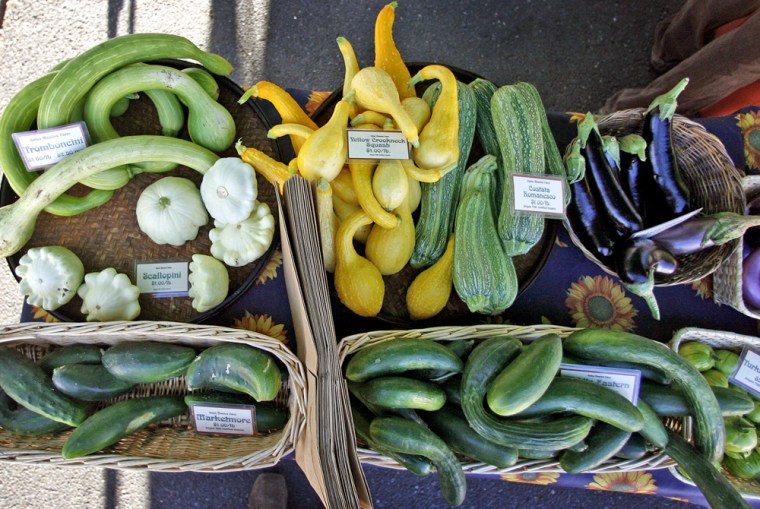How many servings of fruits and vegetables did you eat yesterday?
If it was less than two servings of fruits and three servings of vegetables, you're not alone. Barely 11 percent of American adults are meeting the government's minimum Dietary Guidelines for Americans for both fruits and vegetables, according to two studies published earlier this month. A surprising 62 percent did not consume any whole fruit servings and 25 percent ate no veggies in a day.
Most people know that a diet filled with fruits and vegetables is linked to decreased risk of obesity, heart disease and some cancers. Despite a wider variety of produce being available to us than ever before, as well as a government campaign intended to boost consumption, we're still not eating our fruits and veggies.
People are actually eating fewer vegetables than they were 20 years ago, according to data recorded between 1988 to 2002 from the National Health and Nutrition Examination Surveys, which track American eating habits. Fruit intake didn't budge during the same period.
No matter our best intentions, we eat foods because we like them, not because they're good for us.
That means if we're going to increase the amount of fruits and vegetables in our diets, we're going to have to learn to like them. And that means starting young. Really young.
Raising veggie lovers
In fact, our tastes may be determined before we're even born.
A fetus is able to experience a variety of tastes in amniotic fluid, which is flavored by what the expectant mother eats, researchers Julie Mennella and Gary Beauchamp at the Philadelphia-based Monell Chemical Senses Center found. If moms downed 10 ounces of carrot juice four days a week during their last trimester, they had babies who liked carrot-flavored cereal, the researchers discovered.
Drinking carrot juice while breast-feeding had a similar effect on babies' palates. And when formula-fed babies were offered a variety of pureed vegetables over nine days, they more readily accepted carrots and other new foods.
If parents want to raise vegetable-loving children, they need to be persistent in offering new foods, says Leann Birch, director of Pennsylvania State's Center for Childhood Obesity Research, University Park.
“Children who see parents and other children eating vegetables are more likely to try them,” she says. "If your child does not like broccoli at first, keep trying, and make sure you are eating it, too.”
These early flavor experiences provide the foundation for the food preferences we have as adults.
Try the ‘stealth’ approach
But what about grown-ups who don't like veggies? Is it too late?
Maybe you can't learn to like vegetables, but you can trick yourself by sneaking them into your diet.
In my research lab at Penn State, we use the “stealth” approach — adding finely chopped and blended vegetables to dishes such as casseroles, stews, soups and pasta. We tuck veggies in wherever we can — bulking up sandwiches, tweaking the toppings on pizza, adding them to frozen meals.
In several of our studies, we have found that when people served themselves from a buffet they took the same amount of a food, whether it had added vegetables or not.
What's surprising is that people didn't notice the extra vegetables and rated the foods just as tasty. The people who ate extra vegetables consumed fewer calories and didn’t feel any hungrier later.
Because fruits and vegetables are primarily water, adding them to the diet allows bigger portions while limiting calories.
If you don’t like fruits and vegetables, bigger portions won’t be particularly appealing. But sneaking even small amounts of vegetables and fruits into foods will lower the calorie density, increase intake of produce and help us eat fewer calories.
And what do saved calories mean? Weight loss, of course.
Barbara Rolls is the author of “,” which offers tips on how to eat more fruits and veggies and lower the calorie density of recipes.
